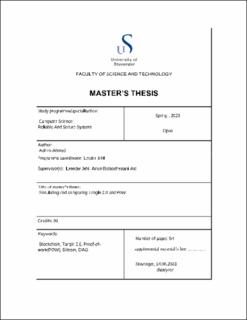Simulating and comparing Tangle 2.0 and PoW
| dc.contributor.advisor | Jehl, Leander | |
| dc.contributor.advisor | Baloochestani Asl, Arian | |
| dc.contributor.author | Ahmed, Adnan | |
| dc.date.accessioned | 2023-08-22T15:51:11Z | |
| dc.date.available | 2023-08-22T15:51:11Z | |
| dc.date.issued | 2023 | |
| dc.identifier | no.uis:inspera:129718883:22519962 | |
| dc.identifier.uri | https://hdl.handle.net/11250/3085301 | |
| dc.description.abstract | Tangle 2.0 is a leaderless probabilistic consensus protocol that is based on a DAG called Tangle. The way consensus is found is in the heaviest DAG and not in the longest chain which is popular in Blockchain. POW is a consensus protocol most known for being used in Bitcoin. The nodes in a POW system have to solve a complex mathematical puzzle that satisfies a difficulty threshold before a new block can be published to the network. Because Tangle 2.0 is such a complex protocol we wish to find out if it has an edge over a traditional consensus protocol such as PoW. We modify the Tangle 2.0 simulating tool by adding POW as the consensus protocol. We compare the original Tangle 2.0 with POW by metrics such as the confirmation time of network messages. Adding POW as the consensus protocol in Tangle 2.0 creates a greedy-heaviest sub-tree structure which has led to forks. We have found that because of forks in the POW network, slowing down the network throughput will eventually rid the network of forks. But leads to a higher confirmation time. So the comparison shows a significant benefit for Tangle 2.0. | |
| dc.description.abstract | ||
| dc.language | eng | |
| dc.publisher | uis | |
| dc.title | Simulating and comparing Tangle 2.0 and PoW | |
| dc.type | Master thesis |
Tilhørende fil(er)
Denne innførselen finnes i følgende samling(er)
-
Studentoppgaver (TN-IDE) [866]
Studentoppgaver i informasjonsteknologi, datateknikk / kybernetikk, signalbehandling
